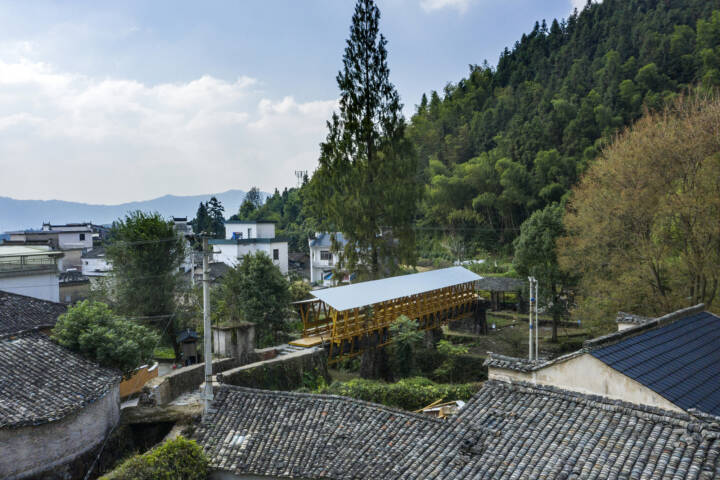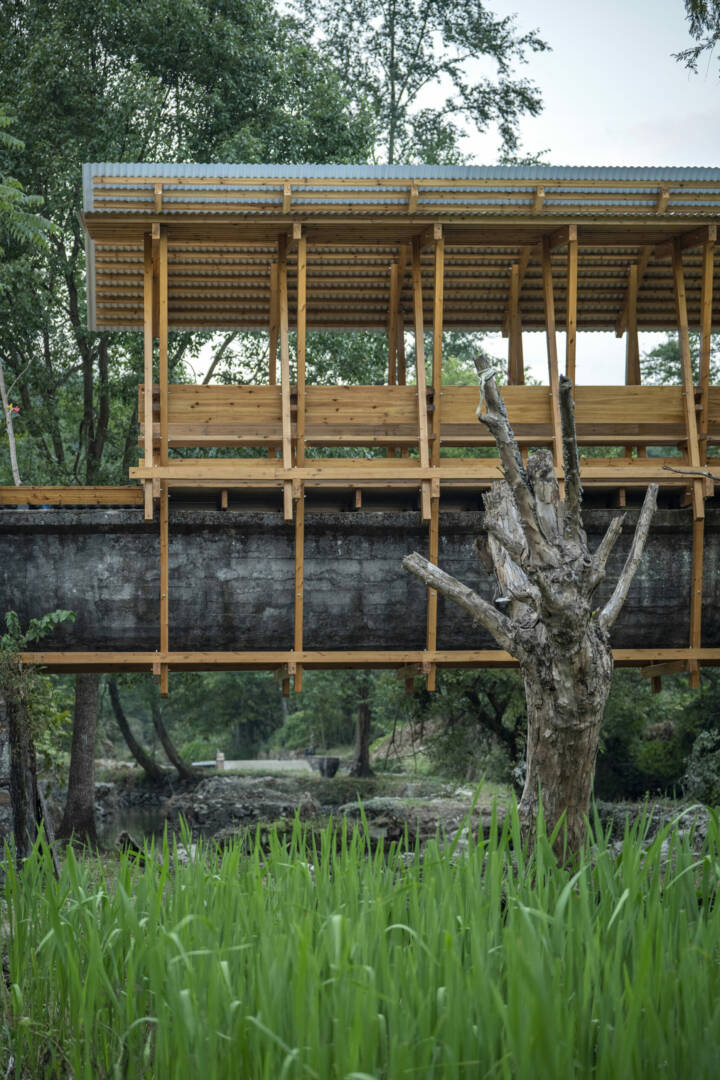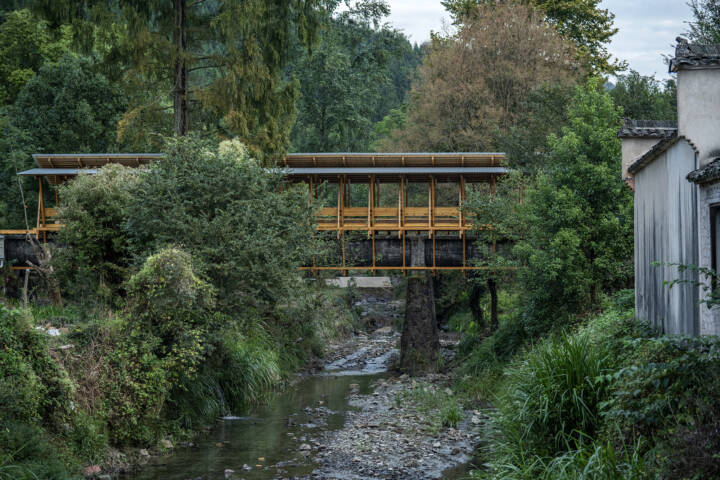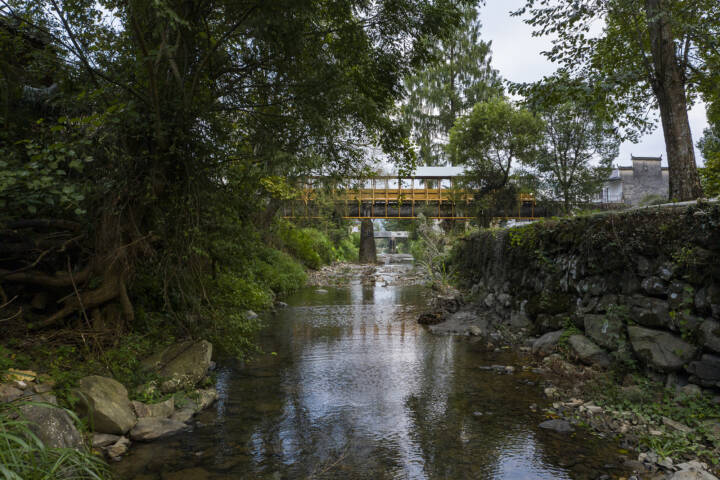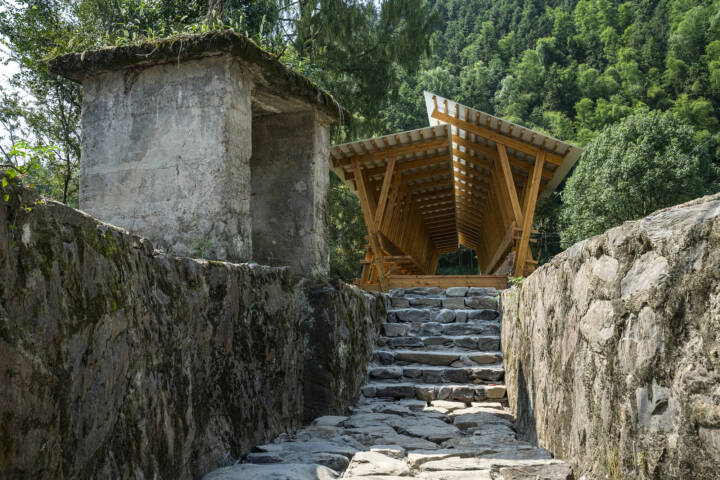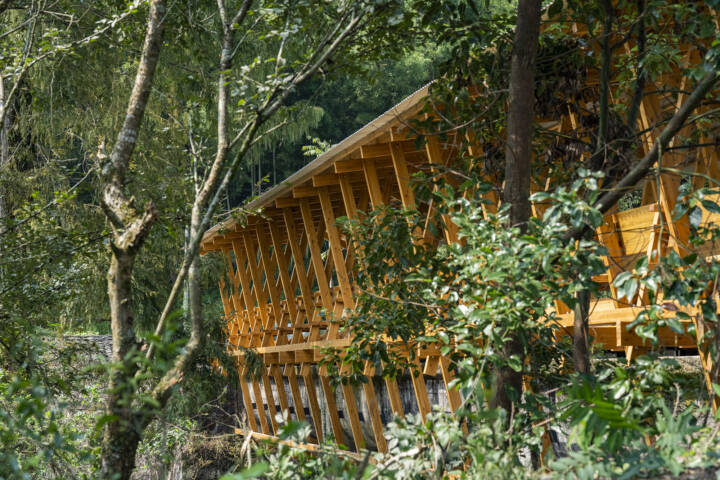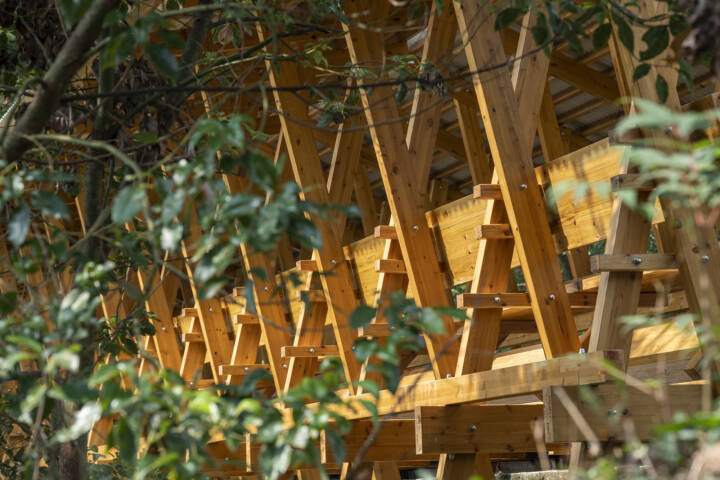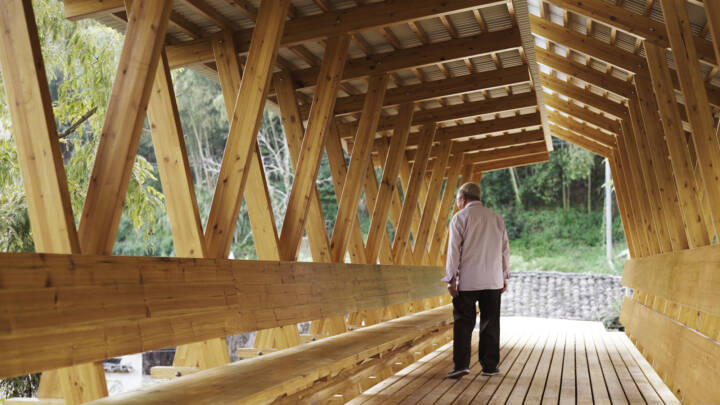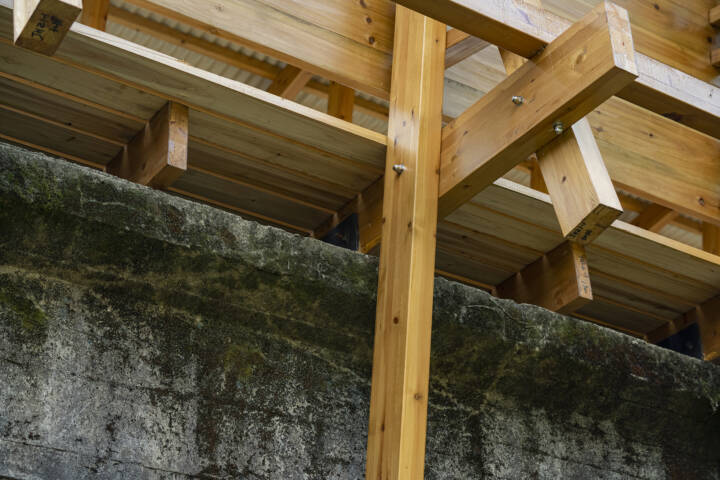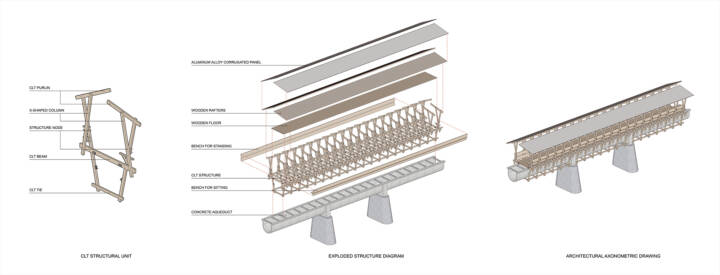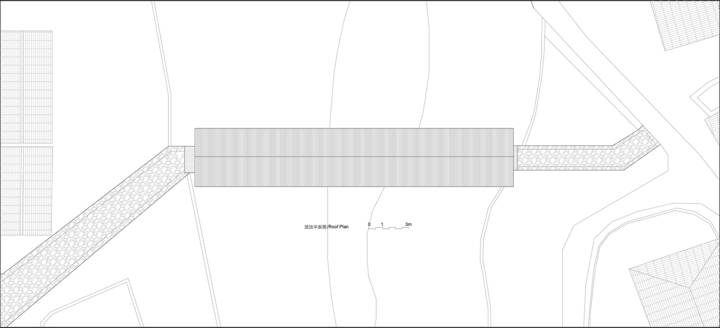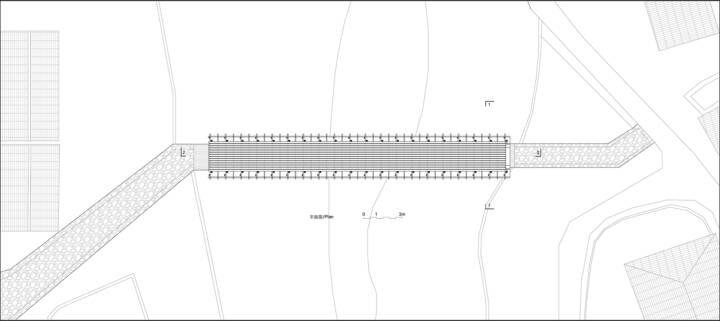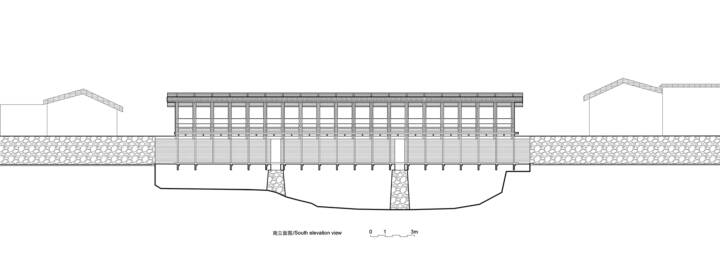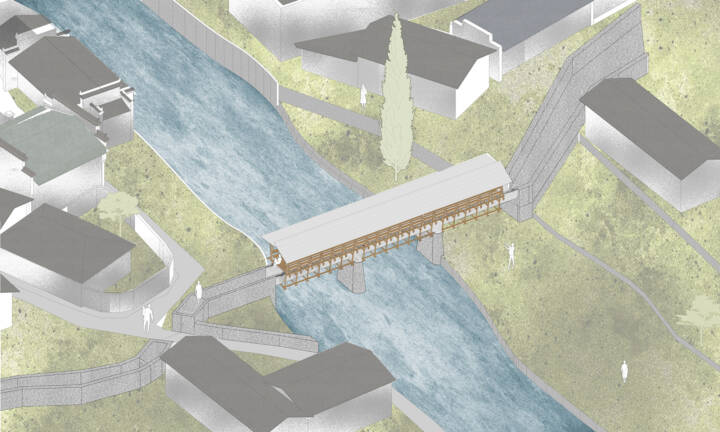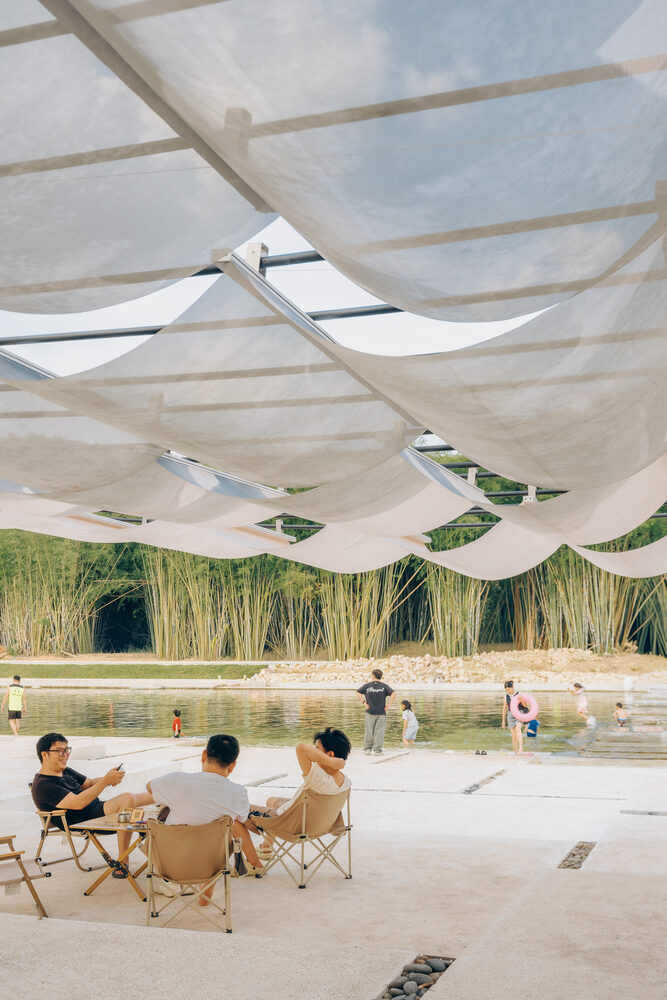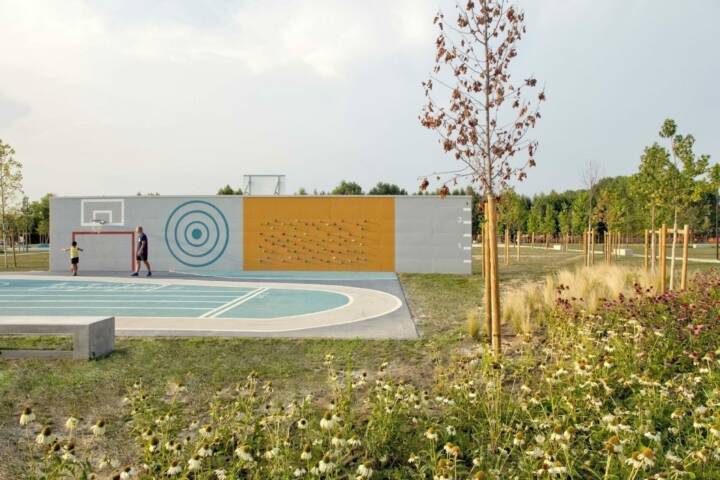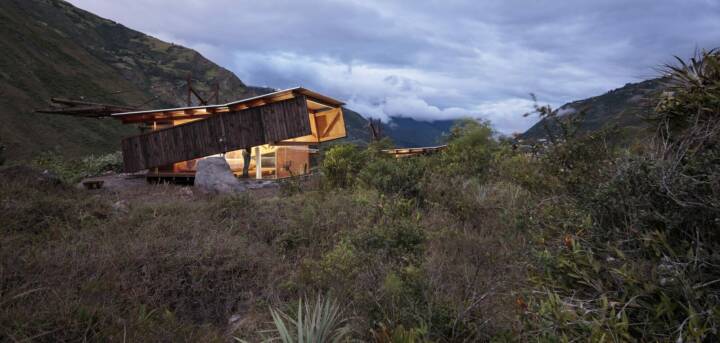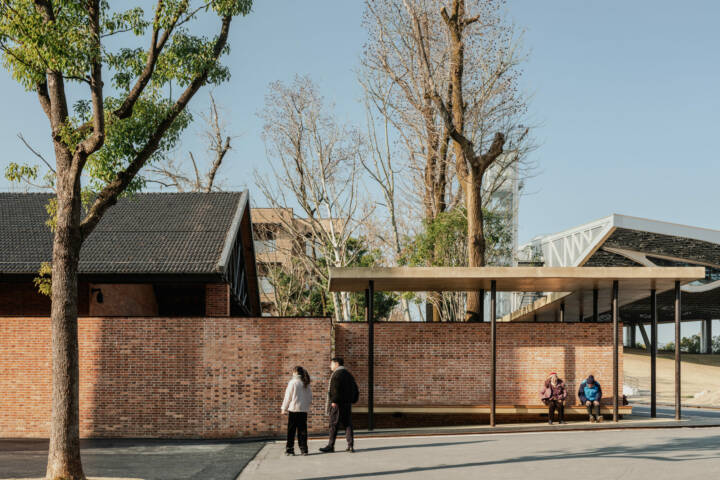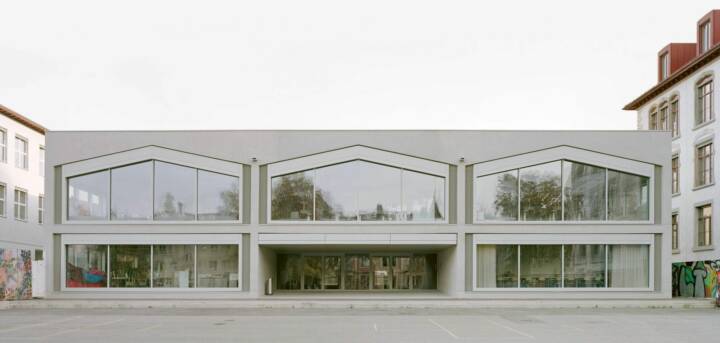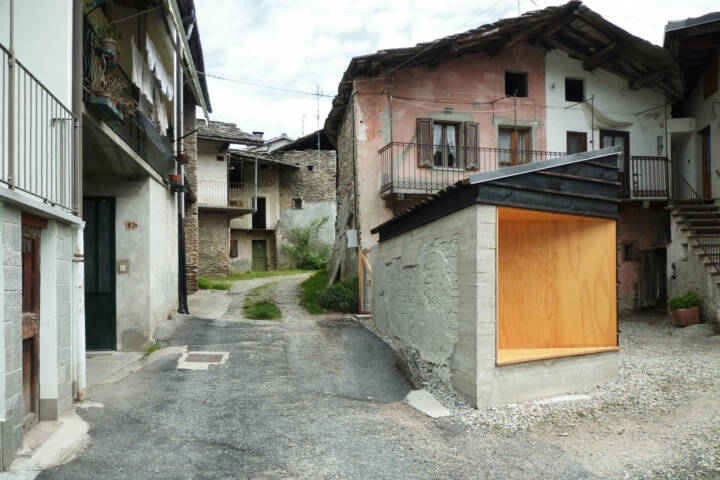Architects: IARA Photography: Huein SongXinran Wu Construction Period: 2023 Location: Huangshan City, China
The project is located in Fengwu Village, Biyang Town, Yixian County, Huangshan City. As the most well-preserved area of traditional villages in southern Anhui, Yixian County boasts rich natural landscapes and cultural heritage. However, Fengwu Village grapples with challenges common to many ordinary villages, including population outflow, aging demographics, and limited preservation of ancient buildings. In 2023, we initiated the rural revitalization charity project ” Fengwu JI”. By leveraging design, the initiative takes an international perspective, focusing on local characteristics and employing methods like micro-renewal and the construction of rural culture. The goal is to foster collective efforts, enriching and revitalizing the lives of Fengwu’s residents and the broader rural community. “The Covered Bridge on Aqueduct” is one of the sub-projects within this initiative.
Read MoreCloseThis project is located along the old water channel in the northern part of the village. The old water channel, constructed in the 1960s for irrigation, stands abandoned today. The surroundings of the aqueduct are naturally wild and lush, creating a unique genius loci. During the initial design phase, we conducted surveys with villagers, and “memory’ was the most frequently mentioned word. These memories included recollections of the collective construction of the old water channel and fond memories of playing around the channel during childhood. Additionally, villagers expressed the need for a space to eat and seek shade during the summer. Therefore, we decided to transform this aqueduct into a comfortable public covered bridge for daily use.
To cherish the collective memory of the village, we preserved the original aqueduct, maintaining its original structure and the traces of time imprinted on its surface. On the body of the old aqueduct, we attached a lightweight wooden bridge body. The use of wood not only pays homage to the local tradition of Huizhou architecture but also enhances the intimacy between the new infrastructure and the villagers.
“The Covered Bridge on Aqueduct” utilizes prefabricated cross-laminated timber (CLT), a new material that offers advantages such as uniform stress distribution, high strength-to-weight ratio, and environmental friendliness. The bridge structure consists of 19 small cross-sectional interlocking units, forming a ribbed system intertwined with the old aqueduct. Each structural unit is composed of two independent X-shaped columns that support their respective roofs.
The roof employs lightweight corrugated panels, resting on the wooden structure. Inside the bridge, there are seats and two rows of reclining chairs, providing villagers with different options for resting and enjoying the view. In terms of construction, all components of the bridge can be lifted by hand, avoiding the need for large construction tools. All joints between wooden components are connected with bolts for easy on-site assembly.
Upon completion, the bridge serves as a respectful tribute and a reminder of a specific history in the village. It also provides a nurturing and gathering space for the village’s future, injecting vitality and vigor into the public life of Fengwu Village.
Text provided by the architect.

